-
Public-private partnership in homeland security
The Homeland Security and Defense Business Council says that job of securing the U.S. homeland is an extensive and daunting mission that cannot be accomplished by government alone; it requires that the United States, collectively, become a resilient nation, with the capabilities needed to prepare for, protect against, respond to, recover from, and mitigate against all threats
-
-
"Burying" FEMA in DHS was "huge structural and operational mistake"
Homeland Security NewsWire’s executive editor Eugene K. Chow recently had the opportunity to interview Aden Hogan Jr., the city manager of Evans, Colorado and the former assistant city manager of Oklahoma City during the 1995 terrorist attack; in their interview, Hogan rates FEMA’s response during the recent spate of natural disasters in the United States, problems the agency has had since it became integrated in DHS, and steps that local governments and residents should be taking to better prepare themselves for major disasters
-
-
Safe, efficient cookstoves for earthquake survivors
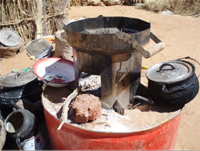
316,000 people were killed and more than one million made homeless by the 12 January 2010 magnitude 7.0 quake that left the capital city of Port-au-Prince in ruins; many of the displaced Haitians still live in tent cities, where even simple tasks such as cooking are a challenge; scientists hope to find the safest and most energy-efficient way for earthquake survivors to cook
-
-
Joplin recovers quickly, schools open on time
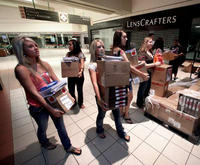
In a show of resiliency and determination, schools in Joplin, Missouri opened on time last week less than ninety days after a devastating tornado leveled much of the town; the tornado’s 200 mile per hour winds tore through Joplin killing 160 people, destroying thousands of homes, and damaging ten schools while completely destroying four others, yet despite the destruction more than 90 percent of Joplin’s students returned to school on time as promised
-
-
Still too early to determine Joplin tornado recovery costs
As Missouri recovers from the colossal tornado that leveled Joplin and the severe flooding in other parts of the state, cleanup efforts have been complicated by the lack of financial data on how much rebuilding will cost; state officials still do not have an exact figure for the costs of reconstruction
-
-
Napolitano addresses Public Private Partnership conference
DHS secretary Janet Napolitano spoke to the attendees and reiterated the private sector’s role as an important partner in strengthening the homeland security enterprise better to defend against evolving threats, including disasters
-
-
Two Kiwi goldfish survive without food for more than four months

Workers returning to a downtown office in Christchurch, New Zealand, discover goldfish alive in their tank at the office; the goldfish have not been fed since the February floods forced the evacuation of the town; fish expert theorize that bacteria kept the water in the tank clean, and that the fish ate algae which grew on rocks in the tank
-
-
Full-body scanning for the shy

The Transportation and Security Administration will soon launch Full Body Scanning 2.0 at several New York area airports; the new software, known as Automated Target Recognition (ATR), will auto-detect items that could pose a potential threat that passengers might be carrying under their clothes, but the suspicous items will be shown against a generic outline of a person for all passengers
-
-
The economic costs of natural disasters
It appears that the verdict is still on out on the economic effects of natural disasters with researchers reaching diverging conclusions on the matter; New Zealand’s economy has actually grown 0.8 percent in the first quarter of this year, despite the 6.3 magnitude earthquake that rocked Christchurch, New Zealand in February; New Zealand may have escaped with little economic repercussions, but studies show that this is not always the case with natural disasters
-
-
Studying disasters in order to prepare for them
Disaster Research Center scientists study the world’s worst disasters in hopes of saving more lives in the future; one of the center’s experts says that disaster planning is constantly changing: “As we have a combination of new threats that face us — natural and technological — as we have changes in climate, as we have changes in population density, in where people are living, people are put at risk and new issues are created”
-
-
Preparing for the worst
Nearly three quarters (73 percent) of companies surveyed by AT&T are calling business continuity a priority in 2011, and almost half of them are seriously thinking about using cloud technology to help them deal with terrorism threats, security breaches, the problems that come when the power goes out or the weather turns extreme
-
-
Key to coping with disasters: neighbors
A political scientist who had moved to New Orleans only weeks before Hurricane Katrina concluded that neighbors — and cooperation among neighbors — are more important for surviving, coping with, and recovering from disasters than ambulances and fire trucks and government aid; to make sure his observations were more than anecdotal, he visited disaster areas around the world, and his data show that his personal experiences reflect a larger truth
-
-
Disaster relief innovation: concrete tent
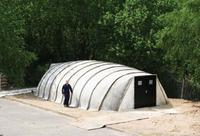
Among innovations which could help relief efforts following major disasters is a fabric shelter that, when sprayed with water, turns to concrete within twenty-four hours; the system works by impregnating cement particles into a fabric from which the tent is made; when the folded tent arrives at the disaster area, it is unrolled, tacked down with stakes, and then filled with air via a fan; once in place, the tent is soaked with water and then left to dry for twenty-four hours; once the concrete hardens, the tents can last for up to ten years; the tents come with installable doors, and since the walls are hard, electrical outlets and plumbing pipes can also be installed
-
-
More American civil engineers deployed to Japan to study damage
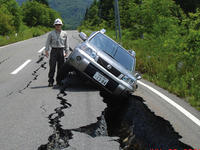
Last week the American Society of Civil Engineers (ASCE) deployed two more disaster assessment teams to Japan to study the damage wrought by the 11 March earthquake and tsunami; the two teams, the third and fourth deployed by ASCE, will tour the damaged areas which include the approximately 292 square miles inundated by the tsunami; one team will focus on examining the effects that the tsunami and earthquake had on port structures; the other team will focus their efforts on investigating the impact of the earthquake and tsunami on coastal structures like tsunami walls, breakwaters, and seawalls
-
-
Government moves quickly to help storm victims in South
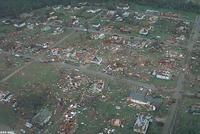
So far residents have been fairly pleased with the government’s response to the worst natural disaster to hit the United States since Hurricane Katrina; after tornadoes touched down in seven states on Wednesday, Secretary Napolitano and other top federal officials immediately began contacting governors in the affected states; just hours after the storms had ravaged Alabama, Obama signed the declaration of disaster in Alabama and by Thursday he had done the same for Georgia and Mississippi; by Friday afternoon FEMA liaison officers had been deployed to Alabama, Georgia, Kentucky, Mississippi, and Tennessee; the storms have killed at least 350 people, injured more than 2,200, and left tens of thousands homeless in seven states
-
- All
- Regional
- Water
- Biometrics
- Borders/Immig
- Business
- Cybersecurity
- Detection
- Disasters
- Government
- Infrastructure
- International
- Public health
- Public Safety
- Communication interoperabillity
- Emergency services
- Emergency medical services
- Fire
- First response
- IEDs
- Law Enforcement
- Law Enforcement Technology
- Military technology
- Nonlethal weapons
- Nuclear weapons
- Personal protection equipment
- Police
- Notification /alert systems
- Situational awareness
- Weapons systems
- Sci-Tech
- Sector Reports
- Surveillance
- Transportation
Advertising & Marketing: advertise@newswirepubs.com
Editorial: editor@newswirepubs.com
General: info@newswirepubs.com
2010-2011 © News Wire Publications, LLC News Wire Publications, LLC
220 Old Country Road | Suite 200 | Mineola | New York | 11501
Permissions and Policies
Editorial: editor@newswirepubs.com
General: info@newswirepubs.com
2010-2011 © News Wire Publications, LLC News Wire Publications, LLC
220 Old Country Road | Suite 200 | Mineola | New York | 11501
Permissions and Policies
